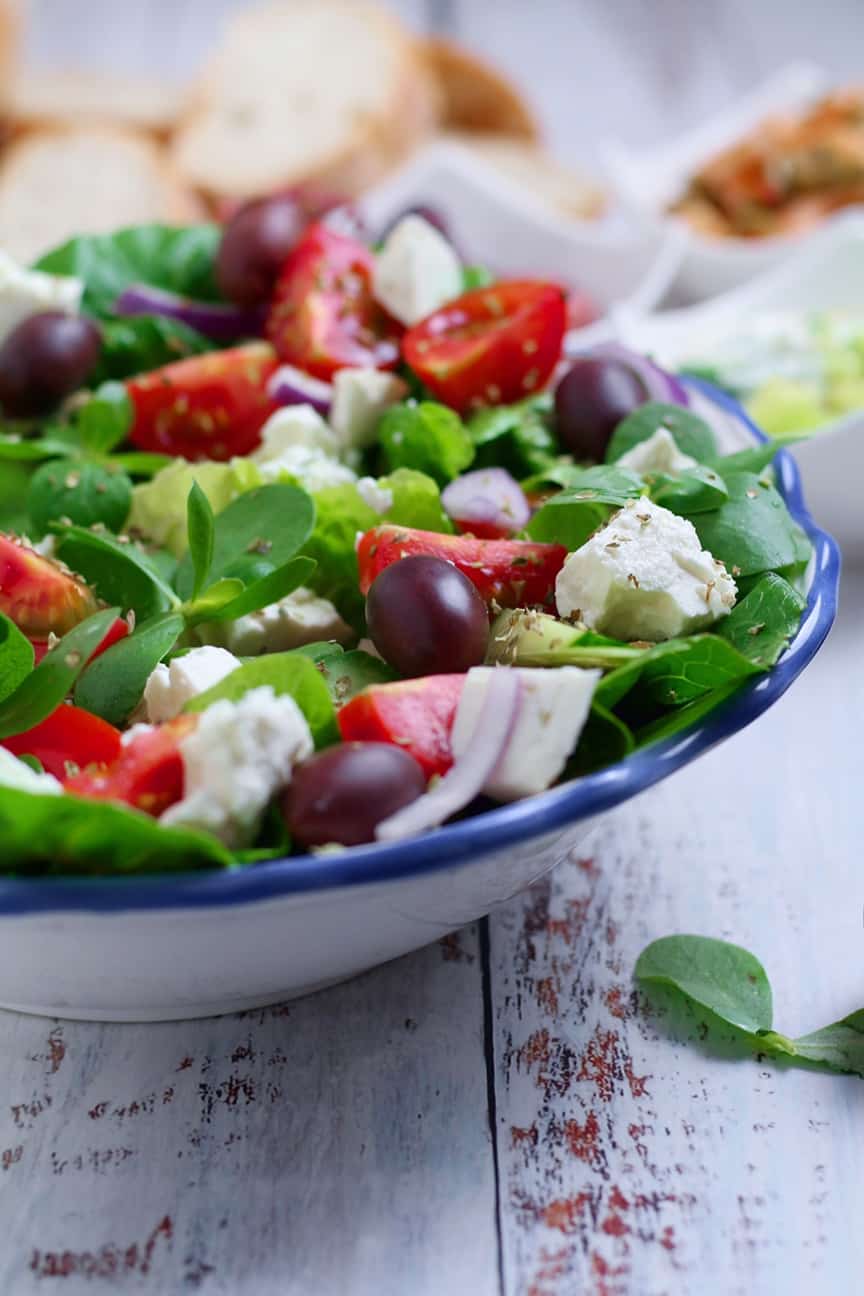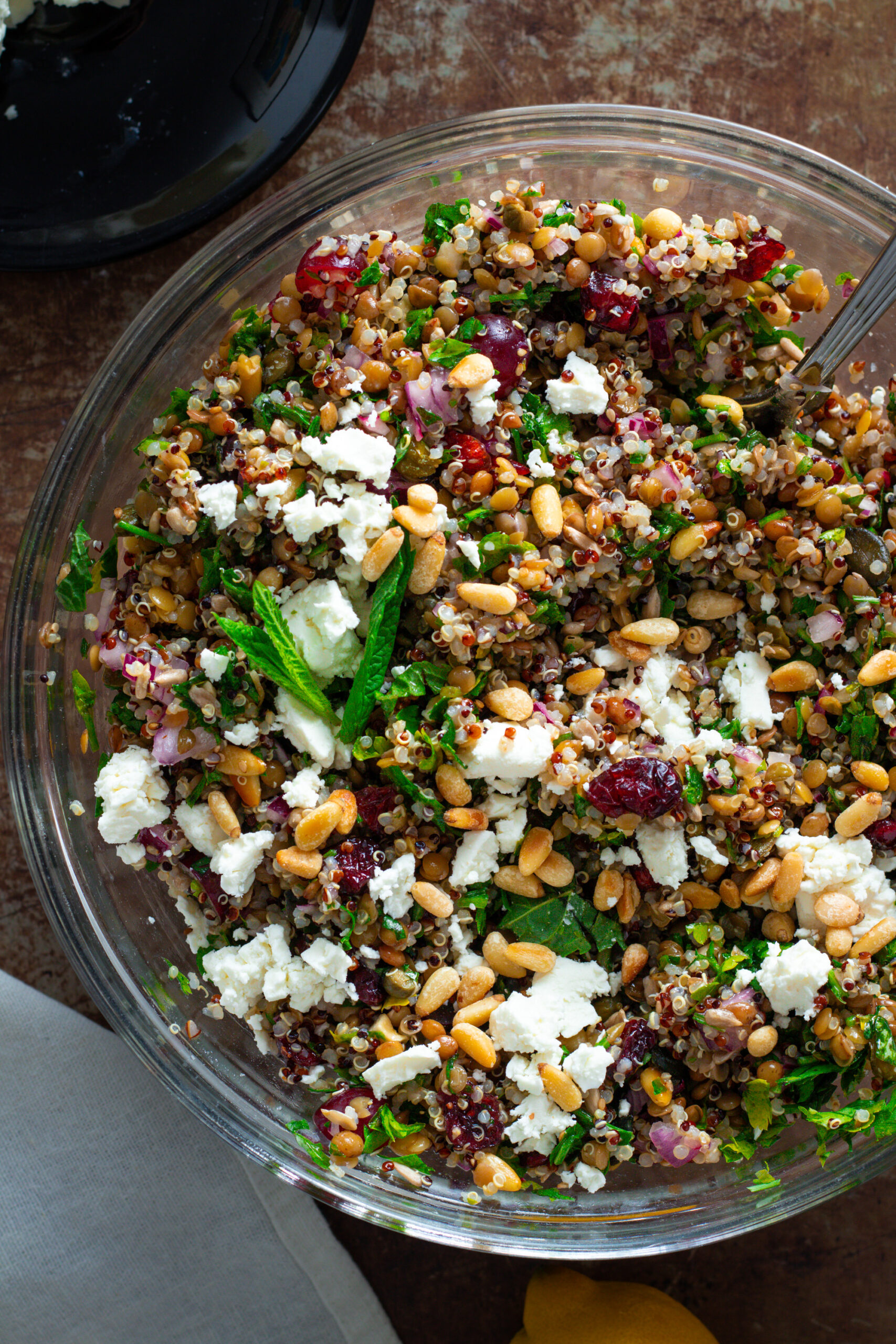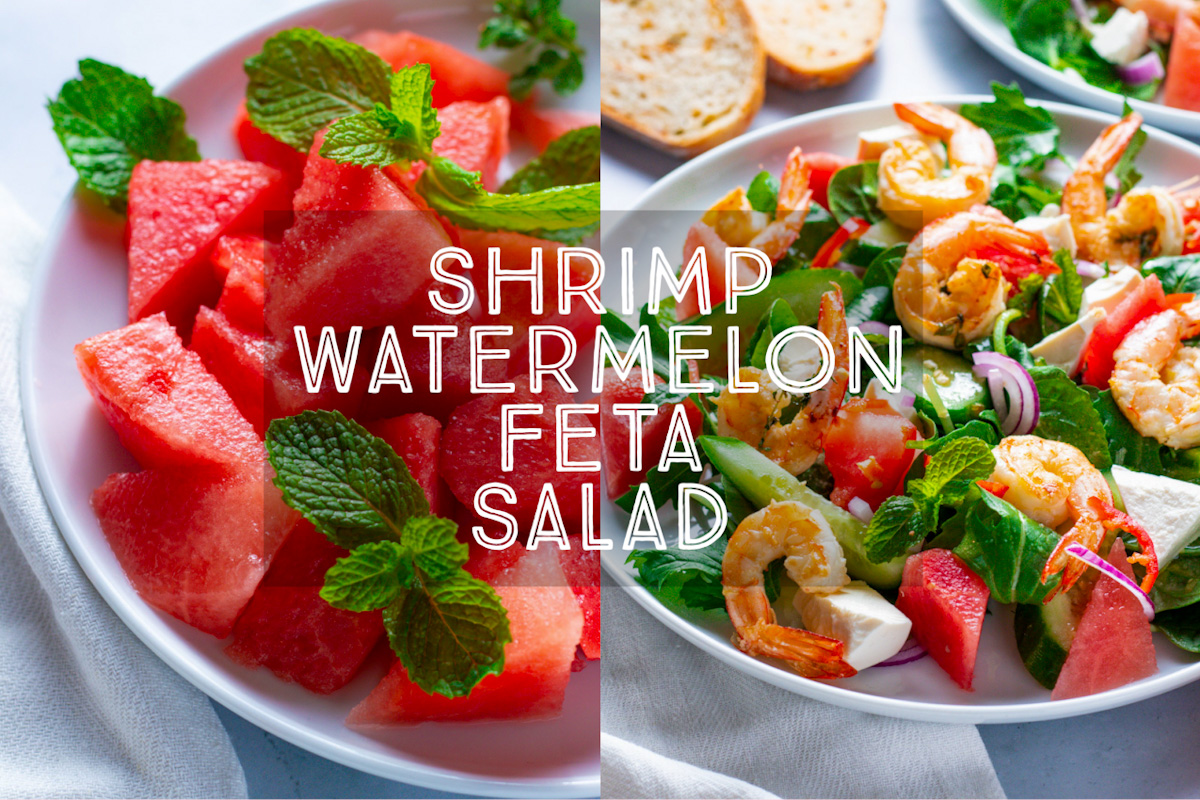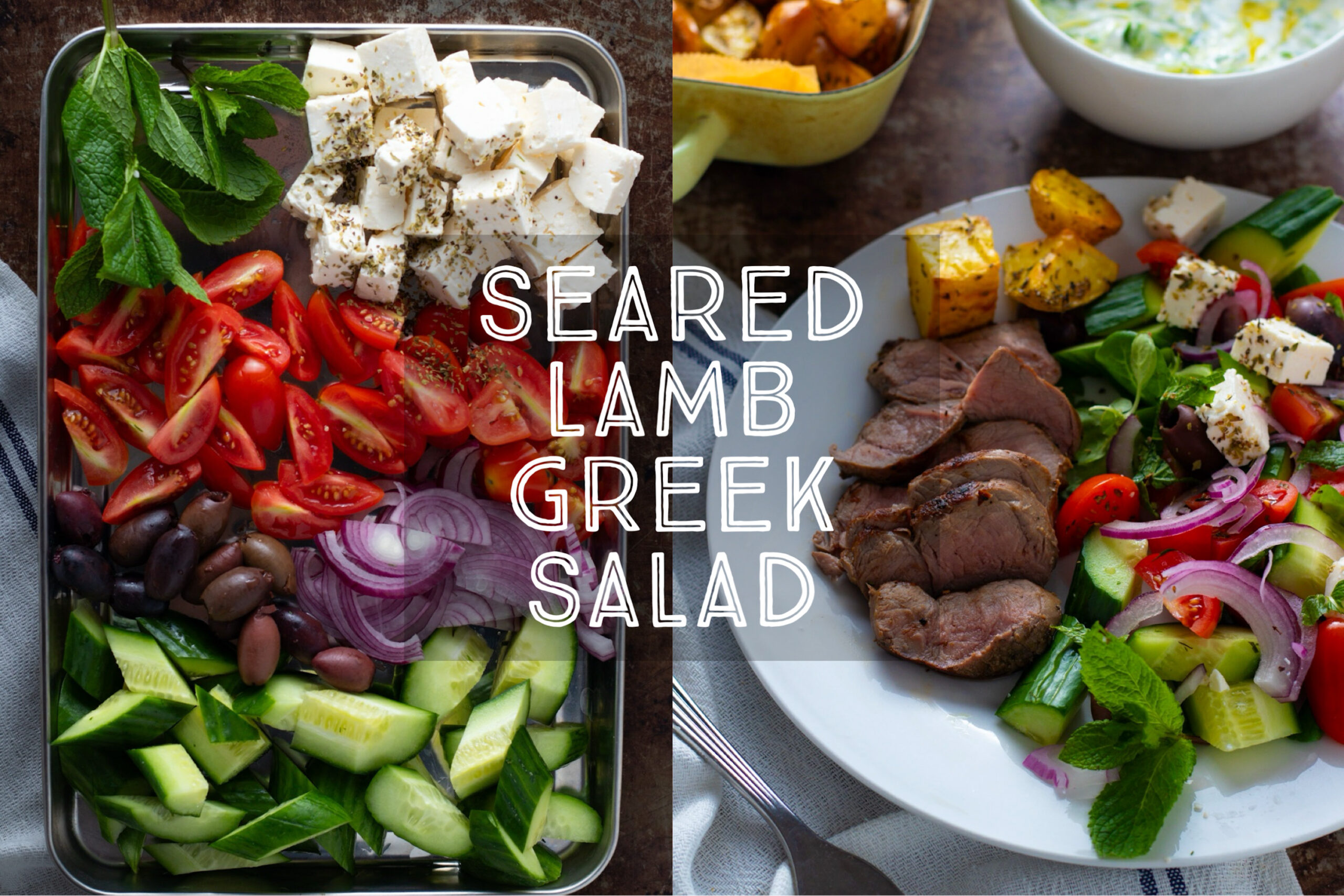
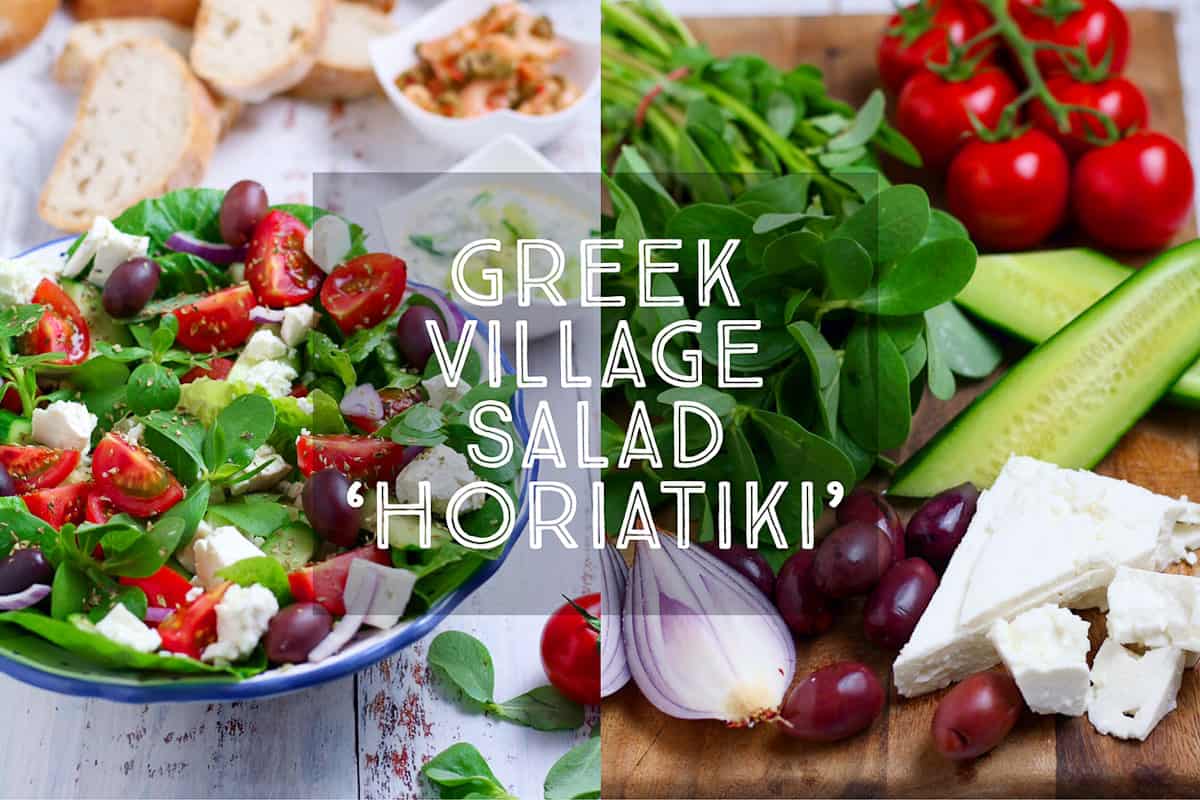
Greek Village Salad – Horiatiki
It's super easy to make a delicious Greek Salad at home. This summery favourite is tasty even in the cooler months, with loads of fresh veg and salty Feta cheese.
The very best Greek Village Salad or Horiatiki you will ever eat will be in a small, unassuming restaurant somewhere in the Mediterranean. Under a deep blue sky with the sun shining, plates of delicious mixed meze and lashings of local wine. There is something about sitting beside the deep blue of the dazzling Aegean sea that makes everything look and taste better.
Of course, we can’t all dash off to Greece at the drop of a hat, so if you’re dreaming of a Greek island escape, why not travel with your tastebuds and whip up a Greek Village Salad for dinner tonight?
TABLE OF CONTENTS
▼
Greek Salad is easy and tasty
It’s super simple to make a delicious Greek Village Salad at home, and this summery favourite is always welcome at my dinner table. Even in the cooler months, the gutsy flavours of a Greek style salad pair beautifully with all sorts of meals, so don’t just save it for summer!
Ingredients
This salad has a few regional variations, but it always includes the following:
- Tomatoes: the riper, sweeter and juicier the tomatoes are, the better your salad will taste
- Cucumbers: for a cool, refreshing crunch
- Feta cheese: Ideally from a mixture of sheep and goat milk. Real Feta cheese should be creamy, tangy and salty
- Black olives: Choose Greek Kalamata olives for the best flavour
- Red onions: Finely sliced red onions add sweetness and a little spice
- Vinegar and olive oil: Red wine vinegar and a gutsy olive oil combine to make a simple and tasty salad dressing.
What’s so special about This Greek Salad Recipe?
The recipe I have for you today is how I learnt to make it when I lived on the island of Cyprus. It’s common in Cyprus to add parsley or a wonderfully old fashioned type of lettuce called purslane to the salad. Whether you want to add greenery to your Greek salad is completely up to you, I’m always keen to eat as many greens and healthy vegetables as I can, so I always include them.
Is Greek Salad actually Greek?
Well, yes and no! While this sort of salad has become known worldwide as a Greek speciality, similar combinations of ingredients can be found right through the Eastern Mediterranean and into the Balkans. From Turkish Çoban salatası or Shepherd’s Salad to Bulgarian or Croatian Shopska salad, the winning mixture of fresh tomatoes, cucumber, olives and salty cheese is hugely popular in many places.
What’s the best cheese to use in a Greek salad?
With a Greek-style salad, it is important to use the best quality feta you can lay your hands on. Real Greek feta cheese is made from sheep and goat milk and has a very distinctive tanginess. Feta made from cow milk is cheaper and more broadly available though, so use what suits your budget.
What should I serve with Greek Salad?
Serve your salad with plenty of fresh bread and, if you fancy, a few small plates of mixed meze. Meze are small plates of nibbles served before the main meal. Tzatziki, cooked prawns tossed with olive oil, garlic chilli and olives or marinated baby octopus are some of my favourites.
Planning a Feast? Try these other Greek and Cypriot inspired recipes!
- Moussaka (Greek Eggplant Casserole)
- Avgolemono Soup (Greek Lemon Chicken Soup)
- Whipped Feta and Honey
- Spicy Herby Calamari Rings
- Roast Tomato and Feta Prawns
- Cypriot Revani / Kalo Prama (Lemon Syrup and Semolina Cake)
Do you have a favourite memory of eating food in the Mediterranean sunshine? Are you for or against adding greens to Greek Salad? Let me know in the comments below! J
FREQUENTLY ASKED QUESTIONS
What is purslane?
Purslane (Portulaca oleracea), sometimes known as Duckweed, or ‘Semizotu’ in Turkish is a leafy salad green, popularly added to this style of salad in Cyprus and Turkey. You can often find it for sale at Turkish grocers. If you can’t get any, simply leave it out, or consider replacing with lamb’s lettuce/mâche which has a similar texture.
Can I make Greek Salad in advance?
This is a sturdy salad, so you can make it in advance. Do let it warm up a little before serving to allow for the best flavour. Only add the dressing directly before serving.
What should I serve with Greek Salad?
Meze! A salad like this is almost always served at the start of a meal in Cyprus, alongside a collection of small dishes of food. I like to make up some tzatziki/cacık, and serve some marinated prawns and baby octopus.
The very best Greek Village Salad or Horiatiki you will ever eat will be in a small, unassuming restaurant somewhere in the Mediterranean, with the sun shining, plates of delicious mixed meze and lashings of local wine…
Greek Village Salad – Horiatiki
Greek Village Salad or Horiatiki, a winning mixture of fresh tomatoes, cucumber, olives and salty cheese is like a burst of Mediterranean sunshine on a plate.
Ingredients
- 300 g ripe tomatoes
- 1 medium cucumber
- 1 handful Kalamata olives
- 200 g Feta cheese
- ½ medium red onion
- 1 tsp dried oregano
optional:
- 1 bunch purslane, woody stems removed
- salad leaves
for the dressing:
- 50 ml red wine vinegar lemon juice
- ½ tsp sugar
- 60 ml olive oil
- sea salt and black pepper
Instructions
- DICE THE VEGETABLES: Roughly dice the tomatoes and cucumber. Add to a large bowl and toss with the purslane or salad leaves (if using).
- ADD OLIVES AND FETA: Add the olives to the bowl and crumble over the feta, leaving it in large chunks. Slice the red onion finely, then scatter over the salad. Sprinkle over the oregano.
- MAKE THE DRESSING: In a small bowl, whisk together the red wine vinegar or lemon juice and sugar. While whisking, pour in the olive oil in a thin stream, whisking continuously until the dressing is glossy and combined.
- SEASON AND SERVE: Season to taste with salt and pepper, then pour over the salad just before serving.
As an Amazon Associate and member of other affiliate programs, I earn from qualifying purchases.
Nutrition
Serving: 1 plate | Calories: 293kcal | Carbohydrates: 8g | Protein: 8g | Fat: 25g | Saturated Fat: 9g | Polyunsaturated Fat: 2g | Monounsaturated Fat: 13g | Cholesterol: 45mg | Sodium: 655mg | Potassium: 338mg | Fiber: 2g | Sugar: 4g | Vitamin A: 910IU | Vitamin C: 14mg | Calcium: 271mg | Iron: 1mg
Tried this recipe?I’d love to hear how it went! Please leave a review or a star rating and let me know how it was! Use the hashtag #daysofjay on Instagram so I can see your delicious creations.

About the Author
Jay Wadams is a cookbook author, food photographer, and graduate of Le Cordon Bleu in Gastronomy and Nutrition.
Based in Italy 🇮🇹 Germany 🇩🇪 and Australia 🇦🇺.









